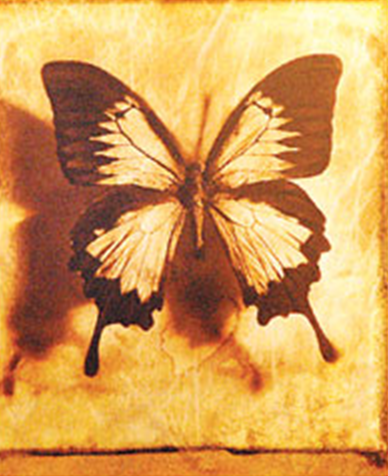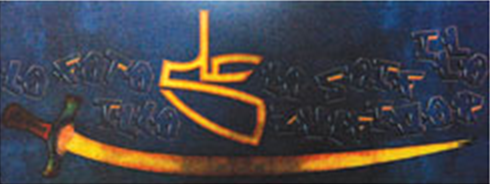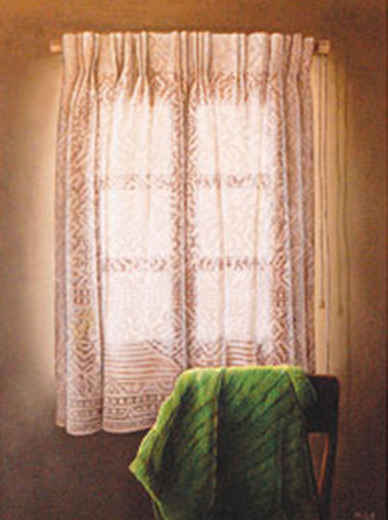Indus Valley School of Art, Karachi
This is a collection of articles archived for the excellence of their content. Readers will be able to edit existing articles and post new articles directly |
Indus Valley School of Art, Karachi
Showcasing teaching talent
By Salwat Ali
When a premier art institution of the city announces a faculty exhibition it has to be a show to contend with. Unlike the average commercial displays, there is a certain degree of responsibility attached to such exhibitions as they represent the faculty's academic and aesthetic acumen and have a direct bearing on institutional profile and character. The mission of the arts faculties is to provide high quality educational opportunities to students planning careers as professional visual artists and art educators as well as to offer programmes for developing a visually literate community. Faculty exhibitions showcase individual expressions but they can also contribute towards this end.
Karachi's Indus Valley School of Art, an established flagship institution of higher education in research and creative activity, held its second faculty exhibition at its in-house gallery premises recently. Initiated last year through the efforts of the current head of the fine arts department, this exhibition is now to be an annual feature. Approximately forty artists were represented by work in all media, attesting both to the extraordinary breadth and diversity of formal approaches that individual members practice and teach. The exhibition showcased the richness and variety of work produced by the faculty. They did not attempt to superimpose a common theme nor to forge bonds among individual works as the curator often does in large group exhibitions; rather, they presented each work as an individual creation bound with others only by time and place.
Other than portraying the faculty the show was also educational and informative. For the students, seeing their teachers' professional works affords an understanding of the ways in which the imperatives of classroom activities are directly linked to creative practice.
The exhibition also charts the aesthetic development of the artists / educators as well as how the dept itself is changing its focus. Technology has had a major impact on how and what kind of art is produced. In this exhibition other than traditional creative techniques the broad range of artwork showed the impact of developing technologies in the finished product and at the subterranean level during work in the making. Department members are increasingly using computers to sketch and store ideas, to conceptualize works in several colour schemes, to plan use of space in individual works and in installations. Printmakers use the computer to scan paintings and prepare the work for the press.
In the show, digitally altered media was exhibited alongside metal sculpture and ceramics. Singular objects of wood stood amongst paintings in oil and acrylic. Photographs and lithographs hovered with architectural drawings, illustrations and graphics. Taken entirely, these works substantiated IVSAA's aggregate creative wealth. Taken singularly, each piece of art proffered a suggestion of each faculty member's artistic vision.
Curator IVS Gallery and member printmaking faculty, Usman Ghouri had submitted two pieces from his ongoing, 'Eternal Verses' series where he reflects upon human vices and virtues. Prominent and defined presence of the figure was noticeable in these new works. Similarly sculptor Jabbar Gull had also shown work in progress, the sooty aluminium pieces, his signature vocabulary of sacred text and takhti emblem - fragmented and dislocated - spotlighted his humble 'Ordinary Souls' and their struggle for steadfastness in a world gone awry. Ahsan Qureshi's 'Colours of Dawn' was the wondrous sight of the horizon just a few seconds before sunrise, captured from a window seat of an airplane, i to Thailand. Tehmina Ahmed's 'In the Forest' was also a moment in time frozen when a glint of light caught her eye. A boy walking through the forest stopped for a moment and so did she.
Ambreen Darr's digital concoction played with the purity of white, the sinful red apple, an opiated profile and divine scripture to comment on aberrant behaviour. Rashid Arshad known for his signature calligraphy-inspired paintings chose to exhibit works from his photography series. His photograph of a public telephone booth in London was scanned and edited in the image editing program to achieve a new and different look. Other than form and composition the play with unusual colours was striking.
Capitalizing on the emotive impact of red M. Ali Khan had captured faint glimpses of city and landscapes by sheer tonal variation of the hue. Nasee Bhurgari's floral nuclei and fruit kernels tapped an inner centrality, the subconscious, through organic symbolism.
For Noorjehan Bilgrami mark-making is soul searching, and in her 'Indigo Sea Series' on show at IVS gallery she moves from a former rigid format of stark and severe imagery towards turbulent waters. Passionate, flowing strokes define a new level of turmoil as the bonded spirit seeks to liberate itself. Young artist Rabia Shoaib's work has always been underscored with her desire to explore her spiritual roots. In her present series she has scripted Surah Noor through a novel vocabulary of symbols of her own creation, much like the hieroglyphs of yore. Grappling with the metaphysical senior artist Mehr Afroz woos the spirit by painting spiritual vestments sans the body.
Roohi Ahmed goes to the heart of the matter in her digital print by depicting a soul leaving the body. Naiza Khan's 'Body Corsets' documents a lived reality. Women have to harbour multiple 'selves' within their being and her 'corsets' define the constraints, pressures and struggle of being pulled in several directions.
Among the traditionalists Ather Jamal was true to form with his watercolours of old Karachi but for his portraits of women from the Katchi Abadis he abandoned colour in favour of line work in sepia tones. Similarly Shakil Siddiqui had also submitted a signature piece. Making the ordinary appear extraordinary through a super realistic rendition is his forte.
While all manner of expression, vision, conceptualization, and industry celebrate the diversity of 'Faculty Art /2' show's contemporary art making the collection still did not spring any surprises. Most artists presented predictable works some opted for newness but of the lukewarm variety. Radical innovation that challenges the imagination brings energy and vigour to a show. There is no dearth of talent within the faculty - perhaps they just need to bolster their commitment to the cause and to themselves.



